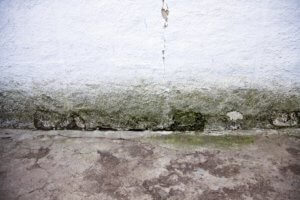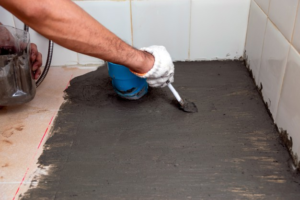Capillarity moisture is one of the most common causes of wet masonry. It can originate when there is no horizontal barrier connected with vertical or if it is permeable to water. In such cases, the masonry is in direct contact with the ground.
Soil moisture makes its way through the tiny pores in the building materials and begins to rise. Most building materials contain hollow spaces and allow water to be absorbed and transported from the soil, according to the principle of capillarity.
The humidity that rises
Finally, the water will rise to a height that will depend fundamentally, on the one hand, the thickness of the pores of the wall, the wallpaper and the paint and, on the other hand, the degree of humidity of the earth below.
However, it is common for dampness in the masonry to reach more than one meter in height. Although the pores are responsible for absorbing water from the soil, moisture by capillarity requires another means to transport more upwards.
He finds it in the form of small grooves, the capillaries, which mark the road in water.
An accurate diagnosis is essential for an effective solution
Before beginning to fight the rising humidity, it is necessary to be completely sure of the causes that are giving rise to wet walls and wet masonry inside, because the different causes must be combated with different mechanisms.
In any case, the diagnosis should always be given by an expert, since, in addition to humidity by capillary action, there are other possible causes of wet walls and walls, such as condensation moisture, hygroscopic humidity and water infiltration.
The typical side effects of moisture by capillarity are moisture damage limited to the first and a half meter of wall, wet or crumbling baseboards and the formation of saline efflorescence on the walls.
If your house is affected by a problem of moisture of any kind please contact us. We have professional solutions.


